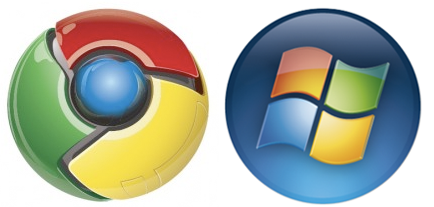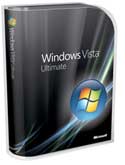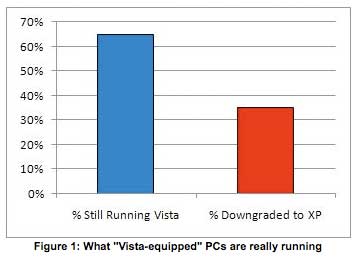It’s always dangerous to get too excited about far-off Microsoft products with code names–especially when Microsoft has barely acknowledged they exist. But SD Times has published a story by David Worthington on “Midori,” which Worthington says is the operating system that Microsoft is building from scratch for the post-Windows world, and even if you read it with a very skeptical eye, it’s a significant piece.
Worthington’s piece is at a site aimed at developers, is pretty technical, and is about pie-in-the-sky goals rather than specific features. I’ll do my best to summarize, interpret, and translate into plain English:
–Microsoft says that Midori is a research project; nobody knows when it might become a shipping one;
–Microsoft is working on a migration path to help folks move from Windows to Midori, as well as some means of running Windows apps in the Midori environment;
–Rather than being a desktop operating system, Midori will be distributed–that is, it’ll consist a bunch of components that can run locally on a traditional PC or remotely across the Net, and which can access data here, there, and everywhere;
–It’ll be designed to be more reliable, with a better understanding of what applications are doing and greater ability to prevent misbehaving apps from causing trouble;
–It will also put more constraints on software developers designed to prevent them from writing problematic applications in the first place;
–It’ll be designed for a world in which multi-core CPUs and other technologies enable massively parallel processing–computing jobs getting divvied up into smaller jobs that all happen at the same time;
–it will be designed to run on PC hardware or in virtualized environments;
–it will have sophisticated means of managing tasks and processes, some of which will relate to doing things in a power-efficient way, thereby making it an attractive mobile OS.
Again, Microsoft hasn’t confirmed the details of Worthington’s piece, and some of my interpretation may be off; the above items are likely more possibilities than confirmed details, and could be just plain wrong. Don’t start lining up at Best Buy just yet–and even if Worthington has his facts right, be prepared for Midori to evolve into something radically different, or to die the ignominious death that many intriguing-sounding Microsoft research projects have died.
Robert Scoble, whose opinion I respect, says that anyone who thinks that Microsoft will have a brand-new OS ready in the next few decades is–Robert’s word–an idiot. (He puts it another way: Bill Gates won’t be with us by the time an all-new Microsoft OS debuts.) I’m not so sure about that.
I don’t know how solid the details of Worthington’s report is. But I’ve got to believe that the broad strokes are correct, and that Microsoft is working on something which it hopes to turn into a product in years, not decades. It’s so utterly clear that the Internet is the computing platform of the future and that basic aspects of Windows are profoundly archaic that Microsoft would be crazy if it didn’t have people starting with a blank slate and working on figuring out what’s next. And the world is changing around Microsoft at such a fast clip that it doesn’t have decades to get its act together. The scenario Midori describes is gonna happen, whether it’s Microsoft, Google, the open-source community, or some company that doesn’t exist yet that makes it happen.
Of course, “brand-new” is a tricky thing to define. I don’t know if there’s any actual code from MS-DOS in Windows Vista–in theory there shouldn’t be, since Vista descends from Windows NT, which was allegedly the first version of Windows written from scratch rather than bolted onto DOS. But there’s no question that Vista carries a fair amount of legacy that dates back to DOS. In the 27 years that Microsoft has dominated operating systems, there have been no true big bangs.
So perhaps Midori, in whatever form it does take, will owe a lot more to today’s Windows than Worthington suggests. Every time Microsoft has said it was working on a radical shift in the past, the end product has proven to be less than radical; if Midori follows that pattern, bits and pieces of it will end up being integrated into an OS that’s evolutionary, not revolutionary.
But to think that Midori or something like it doesn’t exist is to believe that Microsoft is unimaginably dense and complacent…





 It’s a Friday in August, and there’s not a whole lotta shaking goin’ on in the tech world. So I’m not too sheepish about giving you a T-List that includes almost as much stuff from the 1980s as from 2008.
It’s a Friday in August, and there’s not a whole lotta shaking goin’ on in the tech world. So I’m not too sheepish about giving you a T-List that includes almost as much stuff from the 1980s as from 2008. The big news in the blogosphere today involves
The big news in the blogosphere today involves  Microsoft says that Vista is
Microsoft says that Vista is 
 Over at
Over at